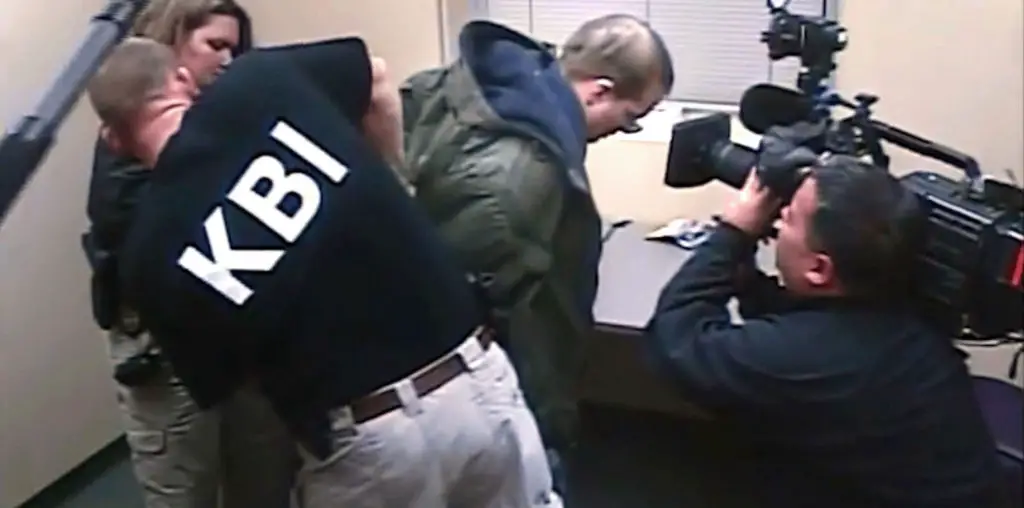
There are six of them – grizzled, gaunt men caked in the dust of death. It’s 14th Century England, and a plague of pestilence has laid waste to their homeland. Cadavers cloak the streets, acting as carpets for scurrying rats. But these highways of rot are a troublesome obstacle for the half-dozen men assigned to navigate beyond town, and unveil the unforgiving cause of this “Black Death.”
Misery is a way of life for Ulric (Sean Bean), the envoy’s fundamentalist Alpha Male. With craggy, jaded eyes and battle-toned biceps, Ulric is a commanding, formidable presence. He’s endured his share of grief, but remains a steadfast soldier of God, certain that Satan is to blame for this sweeping sickness. His mission? To wade through muddy marshes and backwoods trails in search of the fabled necromancer, an unholy being capable of resurrecting the dead and instigating other dark deeds.
Trailing behind our determined clan is a wheeled, wooden wagon of retribution. Its cargo is a steel, body-sized bear-trap – a torture-cage with retractable blades capable of, as one crusader confirms, splitting a man “from a*****e to apple.” Once apprehended, the necromancer will be assured first-class seating inside their injury-inflicting port-a-prison. Later, he’ll be tried for heresy. Hopefully, this noble cease-and-desist mission will banish the plague and restore order to Ulrich’s kingdom.
Before proceeding, however, Ulric seeks out God’s formal seal of approval. He recruits a young, freckle-faced monk named Osmund (Eddie Redmayne) to both navigate his men through a nearby marsh and provide some religious authenticity to his pilgrimage. Osmund knows the territory, and has veiled, personal reasons for joining this cause. Like Ulric, he’s heard that beyond the moisture and mist, there supposedly exists a utopian village untouched by pestilence. What prompts its immunity? The devil, perhaps?
“Black Death” sheds its action-film armor as Ulric’s crew of devil detectives sets muddy feet on the pristine, communal village of past reports. Its cheerful maidens flash “come hither” looks at their visitors, while the resident men offer jovial back-slapping and an extravagant welcome feast.
Predictably, this scenario is too good to be true. Langiva (Carice van Houten), a charismatic blonde and leader of the village, soon reveals her following as pagan loyalists with a serious beef against Christian meddlers. Is Langiva the necromancer sought by Ulric and his devoted band of would-be plague stoppers? Meanwhile, what’s the secret harbored by young Osmund?
The lean-budgeted “Black Death” is medieval meat ‘n potatoes, hold the CGI. When a limb is severed, it looks like bona-fide Heinz ketchup squirting from a plaster prosthetic. It’s not “Lord of the Rings” lavish, but there’s something refreshing about viewing solid, tangible FX achieved via supermarket condiments and a loaner leg from the local medical supply shop.
Filmmaker Christopher Smith, the gore guru behind low-budget creep-fests “Severance” and “Triangle,” knows how to vicariously mangle his talent through impressively staged torture scenes (this is, after all, the Middle Ages, that genial era of executioner’s hoods and witch-burning).
Can the director build a character as convincingly as he destroys one? Well, to a point. Representing an untested Man of God venturing beyond the security of his monastery, Redmayne infuses Osmund with a certain dull naiveté. He’s less successful, however, in conveying the young Monk’s conflicted motives for joining Ulrich’s Christian crusade. Osmund is certainly out to please his Lord. But there’s also a less innocent, more self-self-serving agenda at work. Redmayne is too bland an actor to convey this internal struggle with much charisma or conviction.
Like Viggo Mortensen in “Lord of the Rings,” Bean instills Ulric with macho stoicism – all sweat-soaked beard and bloodstained armor. His comrades, a variation on medieval “Ghostbusters” from 1348, are painted in broad, surface strokes. The brawling bouncer of the bunch looks like… well, a brawling bouncer. A tag-a-long executioner shows slightly more dimension, telling Osmund that he’s a master at cutting, slicing, and beating the truth from his enemies. “I can smell a lie,” he reassures Osmund. “And I smell you.”
“Black Death” ends in a brutal bout of wills between Christians and Pagans. Things don’t turn out well for either party, which seems to be the point of Smith’s ambiguous ending. Intolerance prompts discrimination and violence. Like the film’s ruthless plague, ages-old animosities can spread like poison, impervious to peace. This epiphany is nothing new, and neither is “Black Death,” riding a grimy “medieval men on a mission” theme shared by Nicolas Winding Refn’s recent “Valhalla Rising.”
Still, Smith stages a mean execution. After its final, cringe-worthy set piece, you’ll swear off horseback riding for life.
